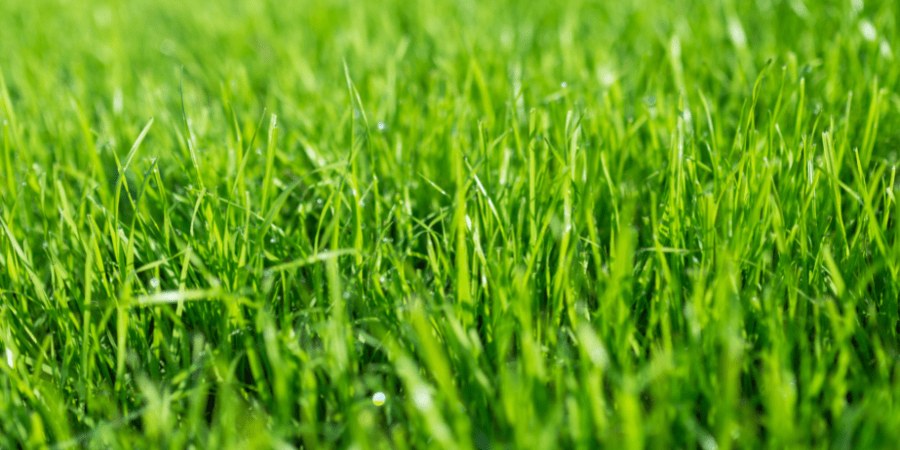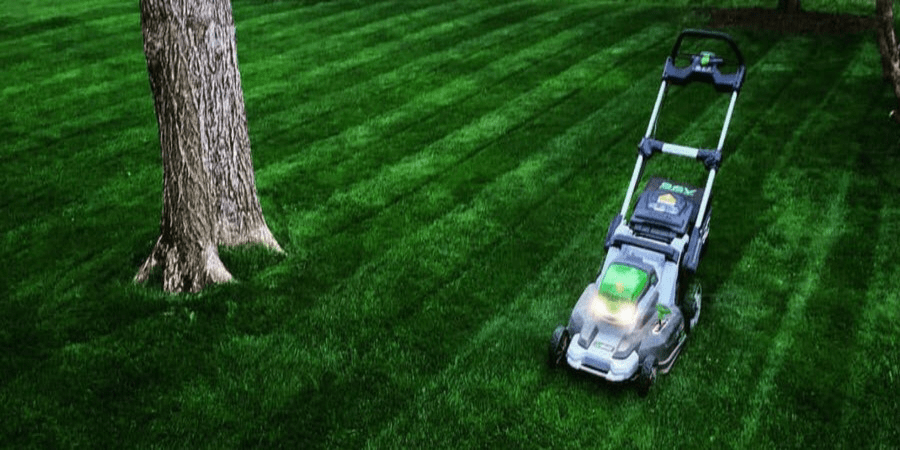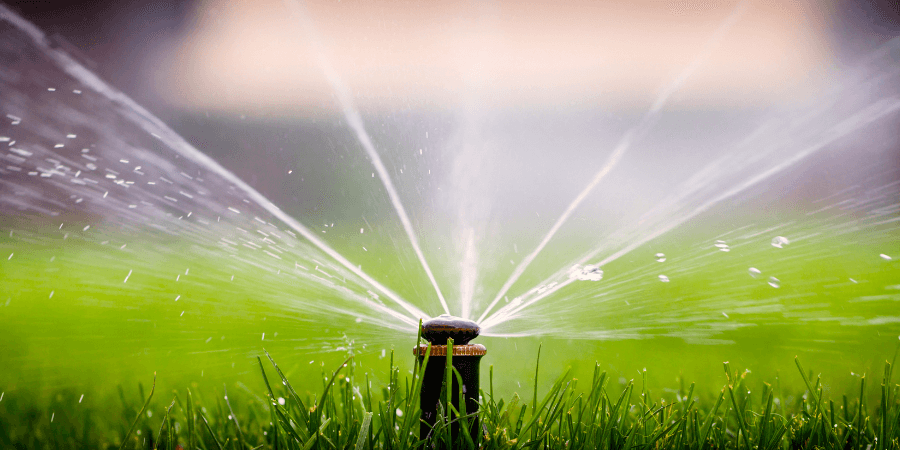How to Save Money Caring for Your Lawn on a Budget
- Milorganite AgronomistApril 13, 2024
“My budget is tight. What’s the bare minimum I have to do to maintain my lawn?”
“What’s the cheapest way to take care of my lawn?”
“How can I save money taking care of my lawn?”
I think it’s fair to say that the prices of everything have gone up, which is why I’ve been hearing these questions much more lately. We’re all looking for ways to save money, and homeowners are looking for ways to maintain their lawns on a tighter budget.
Here are some smart, cost-saving tips to save money on lawn care to keep it healthy and green. It’s about the minimum you can do and still maintain a healthy lawn and landscape. Some tips can be implemented today, while others are long-term strategies for reducing landscape and lawn care costs. My suggestions are sound, basic lawn care practices. They aren’t anything new or outrageous, but when executed properly, they can save you money.
Lawn care can be costly, but lawn care on a budget doesn’t mean you have to sacrifice your lawn and landscape.
It’s Time to Take Care of Your Lawn Yourself
If you rely on a lawn care service to maintain your yard, maybe it’s time to consider doing the work yourself. It’s probably the easiest and quickest way to save a lot of money on lawn care.

I agree that lawn care services are incredibly convenient, but they can drain your lawn care budget quickly and completely. The cost of lawn care services varies throughout the country but tends to be in the range of $100 to $300 per month. If you do it yourself, you can save $1,200 to $3,600 annually. That’s a huge savings!
In warmer climates, consider only hiring a service while your lawn is actively growing. Depending on where you live, that could translate into six months of savings.
Grasscycle and Mulch Fall Leaves for Free Fertilizer
Grasscycle by leaving grass clippings on the lawn when you mow. It keeps clippings out of landfills, reduces yard work, and it’s free of fertilizer!
Grass clippings return nutrients to the soil and can reduce the amount of fertilizer you have to use by as much as 25%. If you fertilize twice annually and grasscycle all season, that’s one extra free fertilizer application.
If your community has fertilization restrictions or blackout periods, this may be the only safe and effective way to apply nitrogen throughout the growing season without using fertilizer. Just like fertilizer, sweep clippings from drives and walkways back onto the lawn to prevent them from entering the local waterways.
You can treat autumn leaves like grass clippings as a free nutritious topdressing for the lawn. Instead of raking leaves, leave them on your lawn. Mow over them a couple of times until the leaves are reduced to the size of a quarter so they don't suffocate the grass. As long as the grass blades can be seen through the leaf pieces, the lawn will be fine.
Fertilize Your Lawn Twice a Year
We recommend fertilizing your lawn four times a year, but if your budget is tight, you can get away with only fertilizing twice. The best times are spring and fall.
For Northerners and the Midwest with cool-season grasses, fertilize your lawn in spring sometime in May, around mid-May to Memorial Day. Fertilize your lawn with Milorganite after the last frost, once your lawn begins to grow green, and when daytime temperatures are consistently in the 60s. Fertilize again in late fall between Halloween and Thanksgiving, just before the first deep freeze or snowfall. This fertilizer application, known as “dormant feeding,” encourages healthier, greener grass in spring.
For Southerners with warm-season grasses, fertilize your lawn in spring after it breaks dormancy when daytime temperatures are consistently in the 70s. This can vary widely depending on where you live. In warmer areas of the country, it could be as early as March. Fertilize your lawn again in late September to early October. The last time to fertilize warm-season grasses in fall is one month before dormancy or the average first-killing frost.
Check Local Fertilizer Ordinances to Help Protect Waterways
Familiarize yourself with your community’s fertilizing ordinances and restrictions, which may dictate how much and when you can fertilize. Ordinances may also require you to apply a fertilizer that contains a certain percentage of slow-release nitrogen to minimize leaching and runoff. Milorganite, for example, contains a minimum of 6% nitrogen (N), 85% of which is water-insoluble and therefore qualifies it as slow-release nitrogen.
Always follow community fertilizing blackout periods, which are set to help protect waterways by reducing the chance of nutrient runoff. Although some may disagree, they’re not set to annoy homeowners. Nutrients washed directly into local waterways can cause problematic algae blooms, killing fish and other aquatic life. It’s also a waste of fertilizer and your money.
Mow Correctly, Save Time and Money
Mow your lawn to the height best suited for the variety of grass in your lawn. Although you may think mowing lower means mowing less, you may actually be trading one task for another.

If you give your lawn a crew cut you’re leaving your lawn more vulnerable to weeds and water evaporating quickly. Weeds will take advantage of the exposed soil and sunlight to germinate and grow. Longer, denser lawns shade the soil to help prevent weeds from germinating and water from evaporating. As a rule, never cut more than 1/3 of the grass blades in one mowing.
Keeping your mower blade sharp is an inexpensive way to make mowing easier and protect grass blades from being ripped or torn, which promotes diseases.
Proper mowing saves water, as well as reduces weeds, and helps prevent disease. The real cost and time savings come from minimizing future problems.
Water Only When Your Lawn Needs It
We often want to water our lawns more than is necessary. Too much water can actually cause problems instead of promoting a healthy lawn.
Lawns require about an inch of water in a seven-day period, whether it’s from rain or, irrigation or a combination of the two. Lawns prefer deep watering rather than multiple light sprinklings. Watering deeply encourages deep, strong root growth.
A low-tech method of monitoring how much your lawn has been watered is to use a squat can, such as a tuna or cat food can. Place a few of them around your lawn when you water and monitor how long it takes for them to fill to 1”. You now know how long to water next time to reach 1”.
To test to see if your lawn is well watered, you should be able to easily insert a screwdriver or similar implement into the soil to the optimal depth of 4 to 6 inches—the depth of the root system.

The time of day you water makes a difference. Water early in the morning, between 4 a.m. and 10 a.m. This allows the water to evaporate from the grass blades to reduce the chance of diseases settling in. Watering mid-day is strongly discouraged. The bright sun, warmer temps, and wind can cause significant evaporation. It’s a waste of water and money. Watering in the evening or the middle of the night provides a wet environment in which diseases and fungi thrive.
Only water when your lawn needs it. If you have an irrigation system, rather than setting a timer and ignoring it, install a rain sensor or soil moisture sensor. Prices range from $20 to $100, and they can quickly pay for themselves. These will help regulate watering and prevent overwatering. Avoid the embarrassing spectacle of your irrigation system running while it’s pouring rain.
Lawns are fairly resilient. During short periods of drought lawns will go dormant and can survive for up to 4 weeks when the temperatures are in the 80s F and for up to 3 weeks when it’s in the 90s F before needing to be watered. Watering may be necessary during extended periods of heat-induced drought, but it’s not to bring your lawn back to life but to keep it alive.
If you have warm-weather grass varieties, you can significantly reduce your water use by allowing your lawn to go dormant in winter.
Budget-Friendly Lawn Renovation
If you’re considering rejuvenating or renovating your lawn, we have an article, Lawn Renovation for Your Budget, which provides cost-saving tips and breaks down what’s required for budget-friendly and mid-range lawn rejuvenation and what’s required for a complete lawn renovation. We'll share three levels of lawn rejuvenation and renovation based on your budget and available time.
We just discussed some basic practices you can use to maintain your lawn and save money. The following activities require a small investment but will save you money in the long run. Over time, these activities will strengthen your lawn and cut down on the time it takes to maintain it. Don't stop with just saving money on your lawn, learn a few ways to maximize your budget in your garden and landscape while being kind to the environment.

